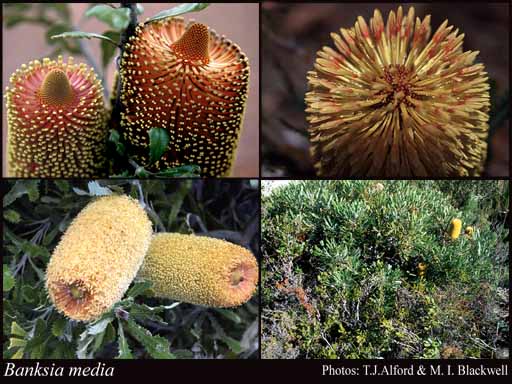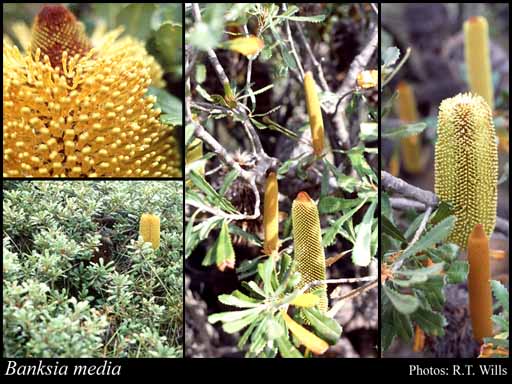- Reference
- Prodr. Suppl. 35 (1830)
- Conservation Code
- Not threatened
- Naturalised Status
- Native to Western Australia
- Name Status
- Current
Spreading shrub or tree (sometimes), 0.5-5 m high. Fl. yellow-orange/brown, Mar to Dec (mainly Mar-Aug). White sand, sandy loam, red clay, loam over limestone.


Scientific Description
Shrubs, 1-3 m high; branchlets hairy. Leaves petiolate, alternate, 50-80 mm long, 10-20 mm wide, hairy; petiole 15-30 mm long; lamina flat, clearly widest above the middle, once divided, pinnately divided, shallowly divided, teeth distinctly pointing towards the apex, with 10-13 lobes on each side, the margins flat. Inflorescences tomentose (with matted or tangled, soft, woolly hairs), yellow or brown; innermost bracts 6-8 mm long, hairy. Perianth 21-34 mm long, hairy, all over, limb apex pubescent (with soft, straight, erect hairs), without awns; pistil 22-38 mm long, curved, style glabrous. Follicles glabrous or hairy, hirsute (with long, rough and coarse hairs), elliptic, 15-25 mm long. Flowers in March, April, May, June, July, August, September, October, November or December. Occurs in the South-west (SW) Botanical Province(s), in the Mallee (MAL) or Esperance Plains (ESP) IBRA subregion(s).
Distribution
- IBRA Regions
- Esperance Plains, Mallee.
- IBRA Subregions
- Eastern Mallee, Fitzgerald, Recherche, Western Mallee.
- IMCRA Regions
- Eucla, WA South Coast.
- Local Government Areas (LGAs)
- Albany, Dundas, Esperance, Gnowangerup, Jerramungup, Kent, Lake Grace, Ravensthorpe.